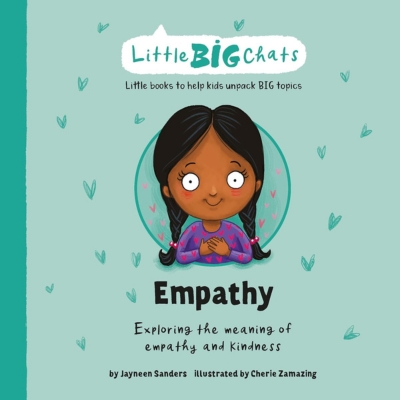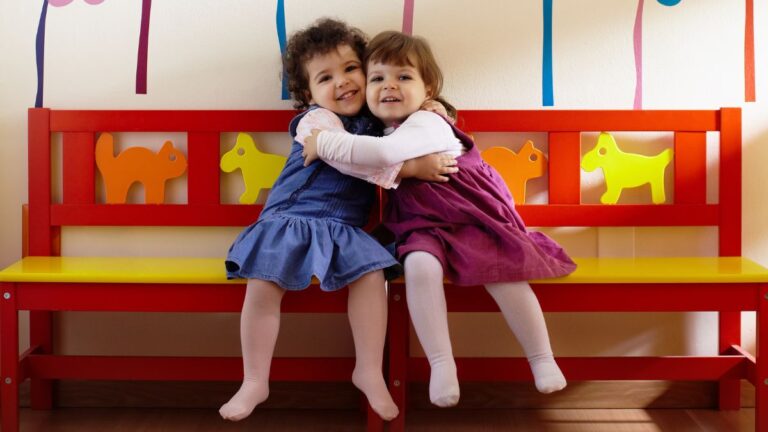Look, it's me!
Colorful and visually appealing

Find it on Amazon

Review by: Kai

Colorful and visually appealing
Little Big Chats: Empathy: A Journey of Kindness and Caring
Little Big Chats: Empathy by Jayneen Sanders is a young children’s book that aims to teach children that empathy mixed with action and helping others is something we should all do to be kinder human beings.
The story begins with a girl named Asha who shows everyone how to be an empathetic person and urges the readers to be kind and caring to others. Asha encounters a variety of different scenarios and settings where she behaves in a way that is empathetic and kind towards others. The story concludes with one of the individuals Asha had showed empathy towards at the story’s beginning, in turn showing empathy towards her. After the story concludes, there are a variety of discussion questions that parents or caregivers can use to create dialogue with children about empathy and ask children questions about what they see on each page through the book.

There were many things I appreciated about this book. The illustrations were colorful and visually appealing.
The book is well-suited for toddlers to kindergarteners as the writing is simple but conveys key messages effectively. The story teaches the basics of emotional intelligence and has clear and easy-to-understand content. It has the potential to benefit children’s well-being by promoting empathy and understanding emotions.
In my opinion the highlight is the discussion questions page at the end that parents can use to maximize this opportunity to talk about how to use their empathy and turn it into action. This page clearly and cleverly poses questions for children relating to each page. The characters in the book looked like they came from diverse ethnic backgrounds although none of the characters had physical disability. This is not an important detail though because the message doesn’t need to include representation of children with a disability to show children how to be kind and empathetic.

Along with the book’s appealing visuals and important topic area, there are several areas which could help the story be more engaging for young children such as more character development and had a stronger narrative to the story. Although the book had a rough plot with different scenes of how to show empathy, the plot was not strongly defined like many other children’s books are.
"You could ask the person if they’re okay."
This quote is one of the authors suggestions about an action that is empathetic.
One of the gaps is that the book not include reasons about why some of these kind and caring actions are good for others. The author could have expanded on the impacts experienced by others from Asha being kind and caring to them. This could develop children’s understanding and ability to explain empathy more successfully to others.
Additionally, it would have been beneficial if the book had also included the message that part of empathy can also lead to standing up for others when they face mistreatment, particularly as people with disabilities are more likely to experience exclusion or unkind behavior by others. By incorporating such lessons, the book could have emphasized the importance of taking action against hurtful behaviour and help give children some helpful options about what to do. The book is engaging overall, and adding a story element to the factual content on emotional intelligence would have made it more captivating and memorable.
When I read this book to a small group of 3–4-year-old at the childcare centre I work at, they said that they “enjoyed the pictures.” The children seemed engaged at all times and they wanted me to read the book again which I ended up doing.

Understanding Empathy by Jayneen Sanders is suitable for 3-6 years old, teaching children to be kinder to others through using their empathy. Although this book doesn’t depict persons with disabilities, it doesn’t have to, as the core message is to be caring to everyone regardless of what background or ability. I would recommend this book for all young children to help learn about how to use their empathy and turn it into action.
I would not recommend this book if you are seeking a book that represents children with disability in the images or text. Empathy is a very good teaching resource for early childhood educators because of the prompts included in the book that can be used to help create dialogue with children on empathy.
I would rate this book a 6.5/10 because it has many important messages, alongside the potential for a stronger plot to help make this book even more engaging for children.

